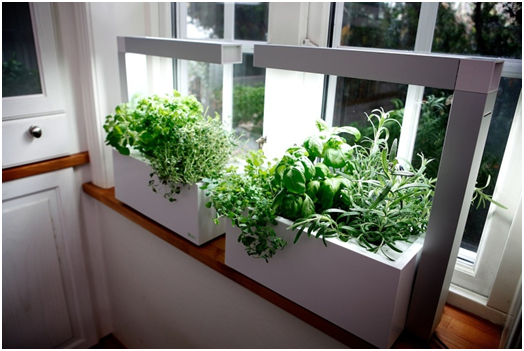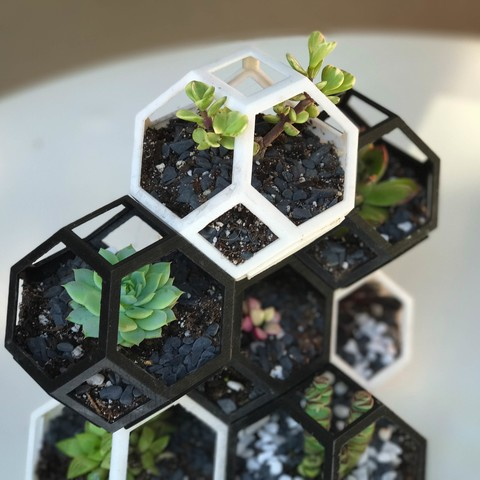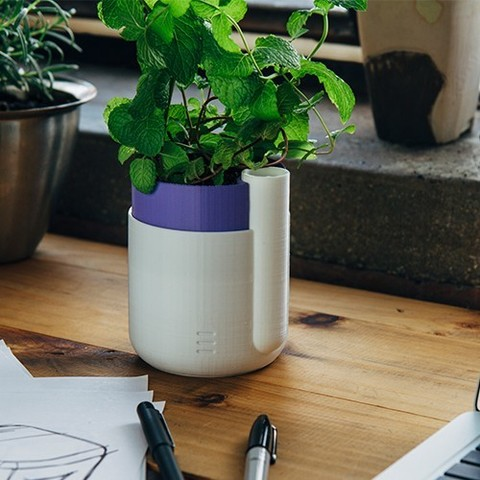
Charles R. Goulding and Preeti Sulibhavi take a look at 3D printed planters as high-tech gardening helps us remain rooted in difficult times.
During this COVID-19 pandemic, many of us are homebound and open to new ideas on how to make use of this unexpected abundance of time. Some have taken to cooking, others have picked up sewing (i.e., home-made masks), but now that the weather is improving for outdoor conditions, gardening appears to be another alternative for utilizing time.
Gardening has always been considered a relaxing activity that can provide great personal rewards, especially during difficult times such as the one we are all in now. During this time of crisis, it has become all the more important to effectively cope with time. With remote working as well as schooling, people can grow vegetable gardens to help cope with uncertainty by planting seeds that sow vegetables and a sense of stability. In this time, when we hear of families with food shortages and insecurities, what better way to provide for ourselves than to try to grow what we eat? Communal gardens are beginning to pop up in neighborhoods and they conform to social distancing measures and guidelines.

In fact, there is more than meets the eye with gardening and the tools that accompany it. Gardening involves emerging technology and environmental concepts.
For example, Koba Wholesale Greenhouse Containers in New Jersey offers planters and grow pots that were developed utilizing 3D printed prototyping of plant containers and trays. Koba also utilizes a “Trench Tek” drainage system that improves water drainage and sustainability. To the layman, a plant pot might not seem like it is the result of tested research and development, but evidently, that is not the case.
There are also 3D printed automatic “smart” plant pots as well. These 3D printed pots look simple on the outside but they have components controlled by an Arduino Nano and these pots are equipped with a built-in reservoir to store water. Also included is a soil moisture sensor with an integrated pump to automatically water the plant. There are even tutorials available on how to build these automatic smart pots at home. Another quarantine activity that can be encouraged.

New and improved 3D printing technologies utilized in greenhouse and garden planters can be supported by R&D tax credits as well.
The Research & Development Tax Credit
Enacted in 1981, the now permanent Federal Research and Development (R&D) Tax Credit allows a credit that typically ranges from 4%-7% of eligible spending for new and improved products and processes. Qualified research must meet the following four criteria:
- Must be technological in nature
- Must be a component of the taxpayer’s business
- Must represent R&D in the experimental sense and generally includes all such costs related to the development or improvement of a product or process
- Must eliminate uncertainty through a process of experimentation that considers one or more alternatives
Eligible costs include US employee wages, cost of supplies consumed in the R&D process, cost of pre-production testing, US contract research expenses, and certain costs associated with developing a patent.
On December 18, 2015, President Obama signed the PATH Act, making the R&D Tax Credit permanent. Beginning in 2016, the R&D credit has been used to offset Alternative Minimum Tax for companies with revenue below $50MM, and startup businesses can obtain up to $250,000 per year in cash rebates applied directly toward payroll taxes.
Sprouting Into Action…
During uncertain times, like the one we are currently in, we must remain vigilant but also remain calm. We will grow stronger and gardening, as well as 3D printing, can help us. Innovation will push our roots deeper into the soil while allowing our branches to soar to new heights.
